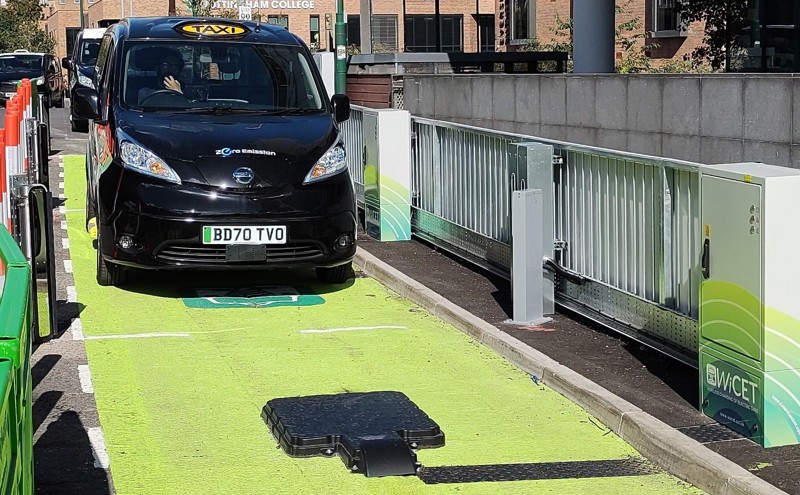Post by The Dark Knight on Jan 16, 2024 8:13:50 GMT
Wireless-charging electric taxi trial provides key learnings for fleets

A trial in Nottingham which saw a fleet of electric and range-extender taxis wirelessly charge while they were waiting for their next fare has helped generate much interest from fleets in the potential of the technology.
The Wireless Charging of Electric Taxis (WiCET) initiative ran for four months, ending last January.
It saw five 11kW induction charging pads installed in the road surface in the taxi rank in Trent Street, outside the central railway station.
Nine vehicles – five LEVC TXs and four Nissan eNV200 Dynamo taxi conversions – were modified so they could charge when the driver, using the guidance of an HMI screen in the cabin, aligned their vehicle over a ground pad.
The system was able to differentiate between cars thus enabling the appropriate drivers to be billed through a web-based app, meaning the drivers had no need to leave their vehicles during charging.
“The core technology worked very well and there’s been high levels of interest in the trial, including from the NHS which is very appreciative of the possibilities for ambulances,” says Richard Sander, technical consultant and project manager at Cenex, which led the initiative.
The system used a resonant induction method and the charging area was protected by a ‘light curtain’ system which, if broken, stopped the charging.
The light curtain was very much an element of the innovation trial but will not be included in commercial deployments.
A further system was able to detect foreign metal objects which would heat up if present on the pad during charging.
The wireless charging system achieved 90% power transfer efficiency, which makes it comparable with plug-in chargers.
“The charging facility was aimed at top-up charging rather than being a replacement for plug-in charging,” says Sander.

A trial in Nottingham which saw a fleet of electric and range-extender taxis wirelessly charge while they were waiting for their next fare has helped generate much interest from fleets in the potential of the technology.
The Wireless Charging of Electric Taxis (WiCET) initiative ran for four months, ending last January.
It saw five 11kW induction charging pads installed in the road surface in the taxi rank in Trent Street, outside the central railway station.
Nine vehicles – five LEVC TXs and four Nissan eNV200 Dynamo taxi conversions – were modified so they could charge when the driver, using the guidance of an HMI screen in the cabin, aligned their vehicle over a ground pad.
The system was able to differentiate between cars thus enabling the appropriate drivers to be billed through a web-based app, meaning the drivers had no need to leave their vehicles during charging.
“The core technology worked very well and there’s been high levels of interest in the trial, including from the NHS which is very appreciative of the possibilities for ambulances,” says Richard Sander, technical consultant and project manager at Cenex, which led the initiative.
The system used a resonant induction method and the charging area was protected by a ‘light curtain’ system which, if broken, stopped the charging.
The light curtain was very much an element of the innovation trial but will not be included in commercial deployments.
A further system was able to detect foreign metal objects which would heat up if present on the pad during charging.
The wireless charging system achieved 90% power transfer efficiency, which makes it comparable with plug-in chargers.
“The charging facility was aimed at top-up charging rather than being a replacement for plug-in charging,” says Sander.

